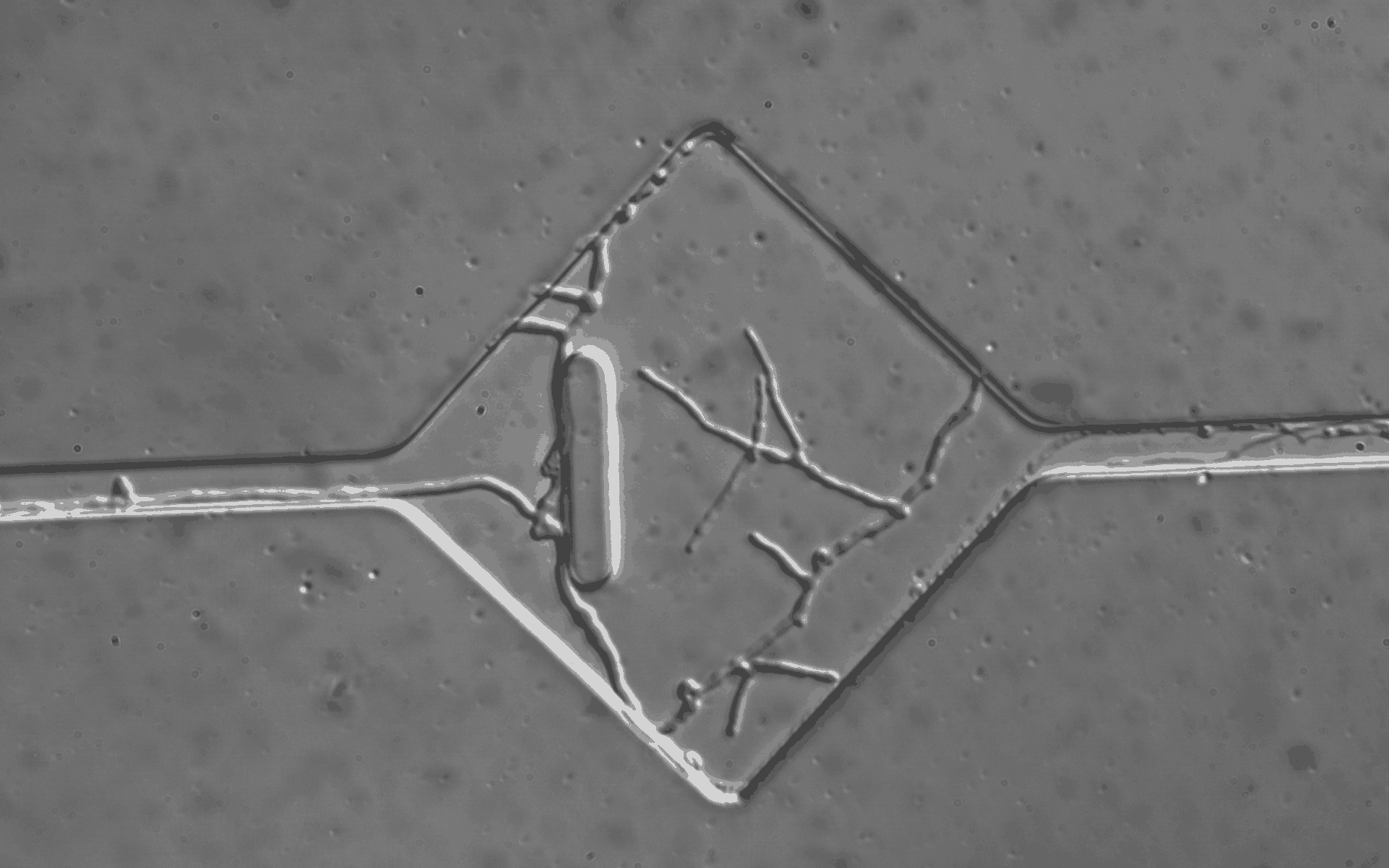Ignoring classical concepts of
exploration and exploitation
you strategise your advance
across fabricated labyrinths
that embrace your occupation.
With reckless abandon
your feathery limbs
race down
obstacle courses of
parallel lines,
meandering squares,
z-shaped funnels,
and blocked passages.
Ploughing through barriers,
as you slither seamlessly
between the confines
of your artificial enclosure.
Tentatively you creep
through sudden openings,
pressing your advantage
with intricate patterns
of growth that seek
to claim these
counterfeited loams
as their own.

This poem is inspired by recent research, which has investigated how fungi navigate through the complex microscopic maze-like structures found in the soil.
Fungi are a group of living organisms that are neither animals, plants, or bacteria, and can range from single celled to very complex multicellular structures. They are found in just about any habitat on Earth, but mostly live on the land, mainly in soil or on plant material rather than in sea or fresh water. Although each fungus can be extremely varied in terms of appearance, all multicellular members share a common structural component, in that they are composed of tiny, feathery strands called hyphae that release enzymes to absorb nutrients from food sources. Fungal behaviour, especially at the hyphal scale, is extremely challenging to study in natural habitats, where it is uncertain exactly how the hyphae move through complex soil structures.
In this new study, researchers created artificial soil systems from glass and silicon-based organic polymers on ‘Soil Chips’. Using a microscope, they were then able to follow several species across these Soil Chips and compare the behaviour of their hyphae. Examples of obstacles that the hyphae encountered in these experiments include zigzag patterns, sharp angles, and rounded corners, and the research team discovered that the fungi used different strategies to form their mycelium (i.e. the collection of hyphae in a fungus’ body). These different characteristics led the researchers to give the various fungi nicknames such as ‘the soldier’ (so called because its hyphae can plough through obstacles at great force, but does not travel a great distance), the ‘marathon runner’ (which likes to send out lone hypha that can travel very far, but which do not cope well with obstacles), and ‘the snake’ (whose hyphae specialise in weaving and growing around obstacles). These results provide insights about hyphal behaviour, as well as an additional understanding of fungal foraging strategies and how these fascinating organisms navigate such complex sub-surface environments.
Discover more from The Poetry of Science
Subscribe to get the latest posts sent to your email.
I would like to reproduce the poem along with its contents in my online science journal “Sasthra – The Indian Journal of Science and Technology (STIJOSAT)”.
Please give permission
Dr. A.R.S. Menon
XChief Editor, Sasthra
S
Of course. Very happy to! Please just credit me and let me know when published so I can share. Thanks so much. 🙏